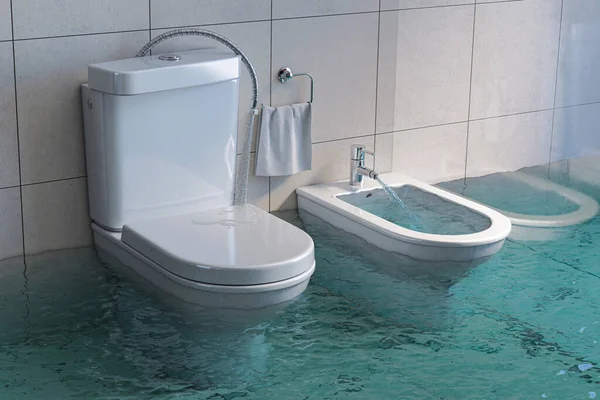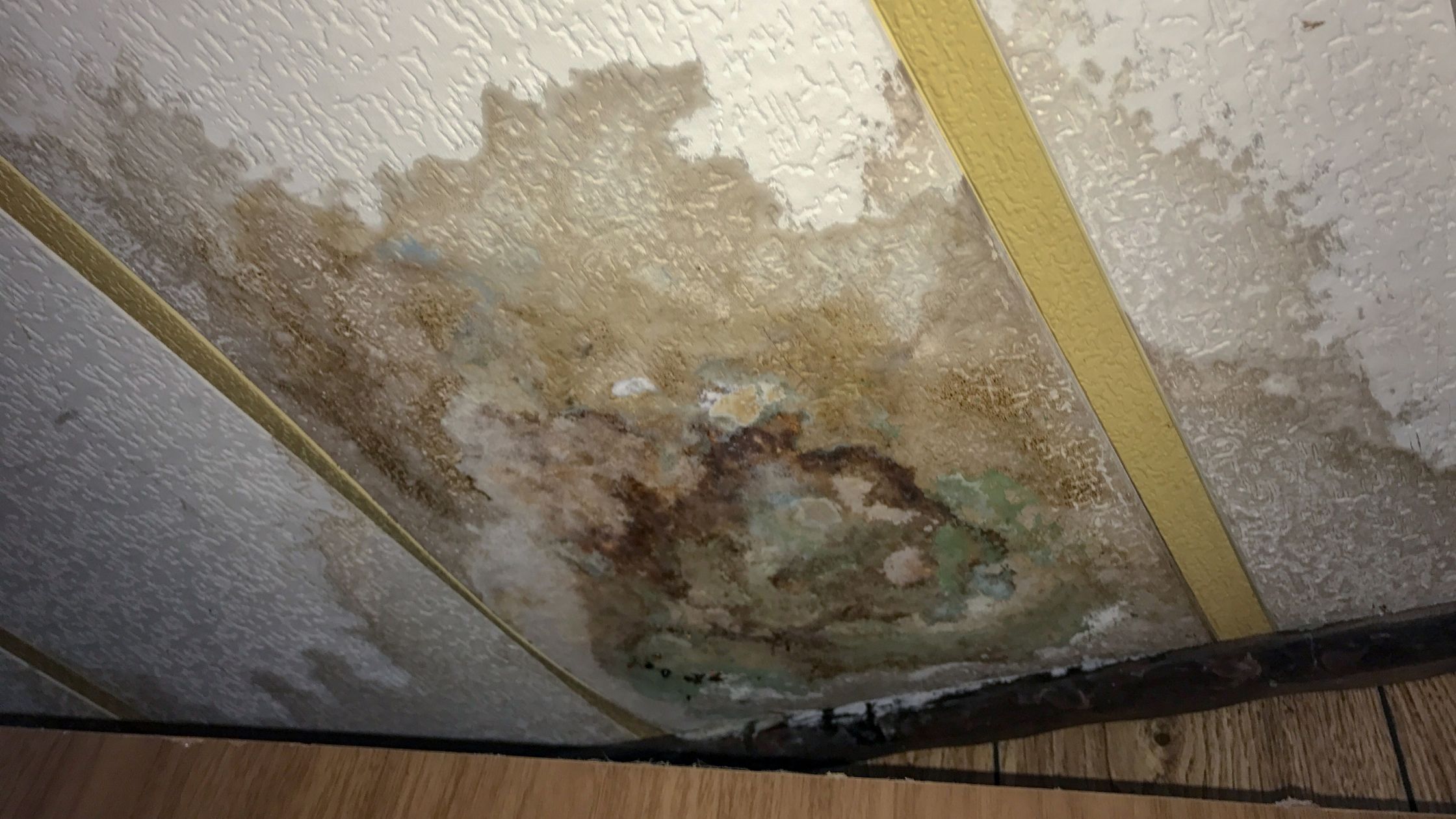Understanding What Behind Bathroom Water Deterioration
Understanding What Behind Bathroom Water Deterioration
Blog Article
What are your opinions about How to Repair and Prevent Bathroom Water Damage??

Water damage commonly occurs in the shower room because of the water used day-to-day. Occasionally, the damage could be a little mold from the shower. Other times, it's enormous damage on your flooring. Whatever it is, it is constantly excellent to know the cause and stop it before it takes place.
This guide will certainly experience several of the typical causes of water damage in the restroom. We will also analyze what you can do to stop these reasons from harming your shower room. Let's dive in.
5 Common Sources Of Water Damage in Restrooms
These are the usual reasons you would have water damage in your bathrooms and exactly how you can find them:
Ruptured or Dripping Pipelines
There are many pipes carrying water to various parts of your bathroom. Some pipes take water to the bathroom, the sink, the taps, the shower, and numerous various other locations. They crisscross the tiny area of the restroom.
Every now and then, these pipes might obtain rustic as well as burst. Other times, human activity might cause them to leakage. When this takes place, you'll find water in the edges of your washroom or on the wall.
To spot this, keep an eye out for bubbling walls, molds, or mildew. Call a specialist emergency plumbing professional to repair this when it takes place.
Fractures in your wall floor tilesv
Bathroom wall ceramic tiles have actually been specially created for that objective. They safeguard the wall from wetness from people taking showers. However, they are not unbreakable.
Sometimes, your shower room wall surface floor tiles crack as well as permit some moisture to permeate right into the wall surface. This might potentially ruin the wall surface if you do not take any kind of activity. If you discover a crack on your wall surface ceramic tiles, fix it right away. Don't wait up until it destroys your wall.
Overruning commodes and also sinks
As humans, occasionally we make mistakes that could trigger some water damage in the washroom. For example, leaving your sink tap on can create overruning as well as damage to other parts of the restroom with dampness.
Also, a defective commode might trigger overruning. For instance, a busted toilet take care of or various other parts of the tank. When this happens, it might damage the flooring.
As quickly as you discover an overruning sink or bathroom, call a plumber to aid manage it instantly.
Roofing system Leaks
Occasionally, the issue of water damage to the restroom could not originate from the restroom. For instance, a roofing leakage might create damage to the restroom ceiling. You can detect the damages done by checking out the water stains on the ceiling.
If you discover water discolorations on your ceiling, examine the roofing system to see if it's damaged. After that, call a specialist to aid solve the problem.
Excess Wetness
It's great to have that long shower and dash water while you dance around and imitate you're performing, however occasionally these acts might create water damage to your bathroom.
Spraying water around can create water to head to edges and form mold and mildews. See just how you spread excess dampness around, and also when you do it, clean it up to avoid damage.
Conclusion
Water damage to your bathroom can be aggravating. However, you can manage it if you avoid several of the reasons discussed in this overview. Call a specialist emergency situation plumber if you notice any kind of severe damage.
How to Repair a Water-Damaged Wall in the Bathroom
All you need to know to repair bathroom wall water damage – from identifying the water source to finishing the repair professionally. If you don’t act quickly to resolve a water damage problem, you could find that it develops into a mold issue and/or cause structural damage to your home. Follow this guide to repair your bathroom before it's too late.
All you need to know to repair bathroom wall water damage
Water damage is a common household problem, and one that, if left unrepaired, can quickly lead to structural problems and health issues. The two most likely rooms where water damage may occur is the bathroom and the kitchen – where water is used often and there is high humidity.
What is water damage?
It is easy to think of water damage as caused by a flood or leaking tap or burst water pipe. However, when water damage is assessed, there are three main categories into which water falls (as classified by the American National Standards Institute). These categories are defined as:
Category 1 Water – ‘Clear Water’
This is sanitary water. There is usually no major threat to health by washing with this water, drinking it, or inhaling if it is streaming. Most water that enters your home will be category 1 water, while most water leaving your home will be either category 2 or 3 water. It may also come from melting snow, rainwater and water tanks.
Damage caused by this type of water can usually be repaired or restored, though this doesn’t mean that there are no potential health issues.
Category 2 Water – ‘Grey Water’
This is contaminated water – sometimes considerably so – and will cause illness if consumed or if it comes into contact with your skin. Water damage in this category is often caused by overflows from toilet bowls, and damage to washing machines and dishwashers. While damaged items might still be repaired or restored after damage by grey water, it is more difficult and more expensive to do so.
If the water damage in your home has been caused by grey water, it is advisable to have repairs made by professionals.
Over time, grey water will deteriorate and become black water.
Category 3 Water – ‘Black Water’
Category 3 water, also known as black water, is highly contaminated and a great risk to health. This may contain raw sewage, heavy metals, and other toxic substances. It will smell terrible.
If this is the water that has caused damage in your bathroom, do not touch it. Stop the water flowing if possible, seal the room and call the experts: it really isn’t worth the risk of ill health and disease that could be fatal. It is very unlikely that items can be repaired or restored if they have been damaged by black water.
https://www.porterscleaning.com/blog/how-to-repair-a-water-damaged-wall-in-the-bathroom/

How to Repair a Water-Damaged Wall in the Bathroom
All you need to know to repair bathroom wall water damage – from identifying the water source to finishing the repair professionally. If you don’t act quickly to resolve a water damage problem, you could find that it develops into a mold issue and/or cause structural damage to your home. Follow this guide to repair your bathroom before it's too late.
All you need to know to repair bathroom wall water damage
Water damage is a common household problem, and one that, if left unrepaired, can quickly lead to structural problems and health issues. The two most likely rooms where water damage may occur is the bathroom and the kitchen – where water is used often and there is high humidity.
What is water damage?
It is easy to think of water damage as caused by a flood or leaking tap or burst water pipe. However, when water damage is assessed, there are three main categories into which water falls (as classified by the American National Standards Institute). These categories are defined as:
Category 1 Water – ‘Clear Water’
This is sanitary water. There is usually no major threat to health by washing with this water, drinking it, or inhaling if it is streaming. Most water that enters your home will be category 1 water, while most water leaving your home will be either category 2 or 3 water. It may also come from melting snow, rainwater and water tanks.
Damage caused by this type of water can usually be repaired or restored, though this doesn’t mean that there are no potential health issues.
Category 2 Water – ‘Grey Water’
This is contaminated water – sometimes considerably so – and will cause illness if consumed or if it comes into contact with your skin. Water damage in this category is often caused by overflows from toilet bowls, and damage to washing machines and dishwashers. While damaged items might still be repaired or restored after damage by grey water, it is more difficult and more expensive to do so.
If the water damage in your home has been caused by grey water, it is advisable to have repairs made by professionals.
Over time, grey water will deteriorate and become black water.
Category 3 Water – ‘Black Water’
Category 3 water, also known as black water, is highly contaminated and a great risk to health. This may contain raw sewage, heavy metals, and other toxic substances. It will smell terrible.
If this is the water that has caused damage in your bathroom, do not touch it. Stop the water flowing if possible, seal the room and call the experts: it really isn’t worth the risk of ill health and disease that could be fatal. It is very unlikely that items can be repaired or restored if they have been damaged by black water.
https://www.porterscleaning.com/blog/how-to-repair-a-water-damaged-wall-in-the-bathroom/
I came across that write up on How to Repair and Prevent Bathroom Water Damage? while doing a lookup on the search engines. Make sure you take the time to promote this write-up if you liked it. Thanks for your time. Visit us again soon.
Give Me A Quote! Report this page